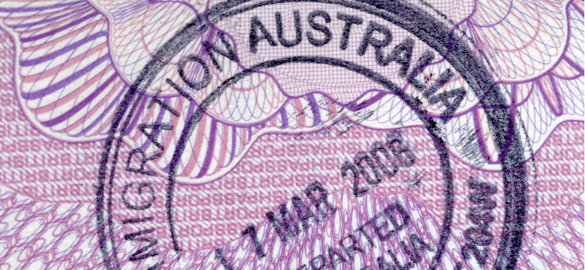
457 Visa
One of the most common options for working holiday visa holders to extend their time in Australia is to find an employer to sponsor them on the temporary 457 visa.
There are over 30,000 approved employer sponsors and over 100,000 457 visa holders in Australia today.
125,000 new 457 visa applications have been made each year for the last two years, of which UK, Irish and Indian passport holders make up 50%.
Visa processing usually only takes a matter of weeks, making the 457 visa a fast track way to get settled into the Australian lifestyle. Many 457 visa holders go on to become permanent residents of Australia.
So, how does it all work?
There are three stages to the process and they have to be completed in order; you can’t apply for the visa before the employer has done their part.
It pays to check that each of these parts will stack up, before making any application to immigration; a good migration agent can help you assess this.
1. Employers have to be, or apply to immigration to become, an approved sponsor
2. The employer then needs to make a ‘nomination’ application to get the job (occupation) approved for the employee to fill.
3. The employee then applies for the 457 visa
To be approved as a sponsor, an employer has to show that they are either spending money training their Australian staff or willing to pay a training levy to an industry fund such as a TAFE college. The training levy is a great option for Sole Traders.
For the Nomination, the job on offer needs to match up with the duties of an occupation on the government’s Consolidated Skilled Occupation List (CSOL). This list has 600 occupations including all the major trades along with hundreds of professions such as medical, engineering, marketing, HR, sales, customer service and more. See www.immi.gov.au/skilled/general-skilled-migration/consolidated-sponsored-occupation-list
The job has to be full time and the employer must offer a ‘market salary’ above $53,900 per year. Shift allowances and other guaranteed payments can be counted towards the salary but overtime or superannuation payments can’t be counted towards meeting this minimum pay rate.
The visa applicant needs to have the skills to do the job; this is shown by either having qualifcations or work experience relevant to the job offered.
For trade occupations this means either having the equivalent of an Australian AQF certificate III, which is a UK NVQ 3 or Irish FETAC level 6-7 cert. If you don’t have a formal qualification, at least three years full time experience in the occupation can be accepted, but you will need strong proof of the work history.
For many of the other professions, a degree-level qualification or at least five years’ work experience is needed. There are a few non-trade occupations that need only Diploma level or three years’ experience.
If you are lucky, your employer is already an approved sponsor, and only parts two and three are needed and can be completed pretty quickly if you and your employer are organised.
So if all three of these parts are looking good, you are ready to prepare and lodge your applications.
Allow enough time to get all the documents ready; you need to make sure everything is lodged with immigration before your current visa expires.
The costs, following two fees rises this year for the 457 visa, are:
Employer Sponsorship application: $420 of which one fee covers a three-year approval.
Employer Nomination application: $330 for each new employee.
Employee 457 visa application: $1,035 per adult (so double if you have a partner on the application).
And be aware, that on 1st July 2013 Immigration also introduced a nasty fee called the Subsequent Temporary Application Charge or ‘STAC’ for short. This STAC fee applies if you have already had a temporary visa granted while in Australia (eg your second WHV) and you apply for another temporary visa while you are in Australia.
The STAC fee is $700 per visa applicant.
Some tips on finding a sponsoring employer
• Focus your job search on non-government roles – government bodies rarely sponsor.
• Approach employers directly rather than through agencies.
• Call anyone you know that might help with an introduction to an employer
• Get involved in local sports, social or business networks as these are great ways to meet people.
• At the job interview stage, ask if the employer is willing to/open to/has sponsored before.
Many employers want employees to work a probationary period before they will commit to sponsorship, this means you might need 2-3 months to prove yourself.
• If the employer is not willing to sponsor, better not to waste your valuable working holiday visa time with them – keep looking.
By John McQuaid
John McQuaid is registered Migration Agent and Director at Arrive Australia Migration Services.
John, originally from Northern Ireland migrated to Australia in the early nineties and now lives permanently in Sydney’s Eastern suburbs.
www.arriveaustralia.com.au
